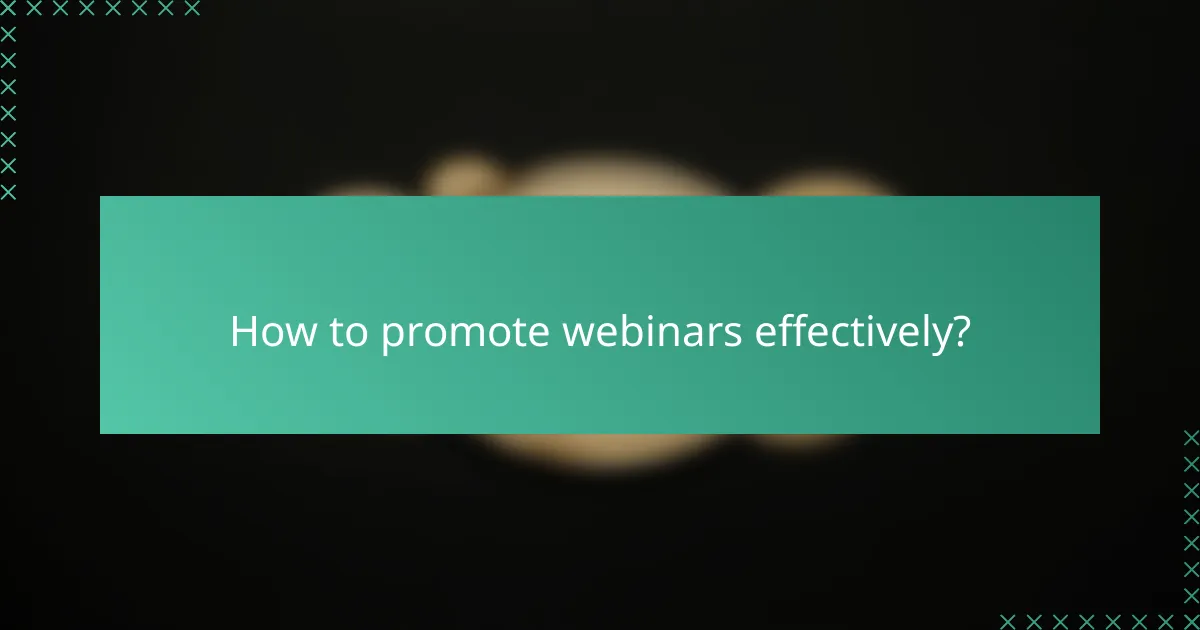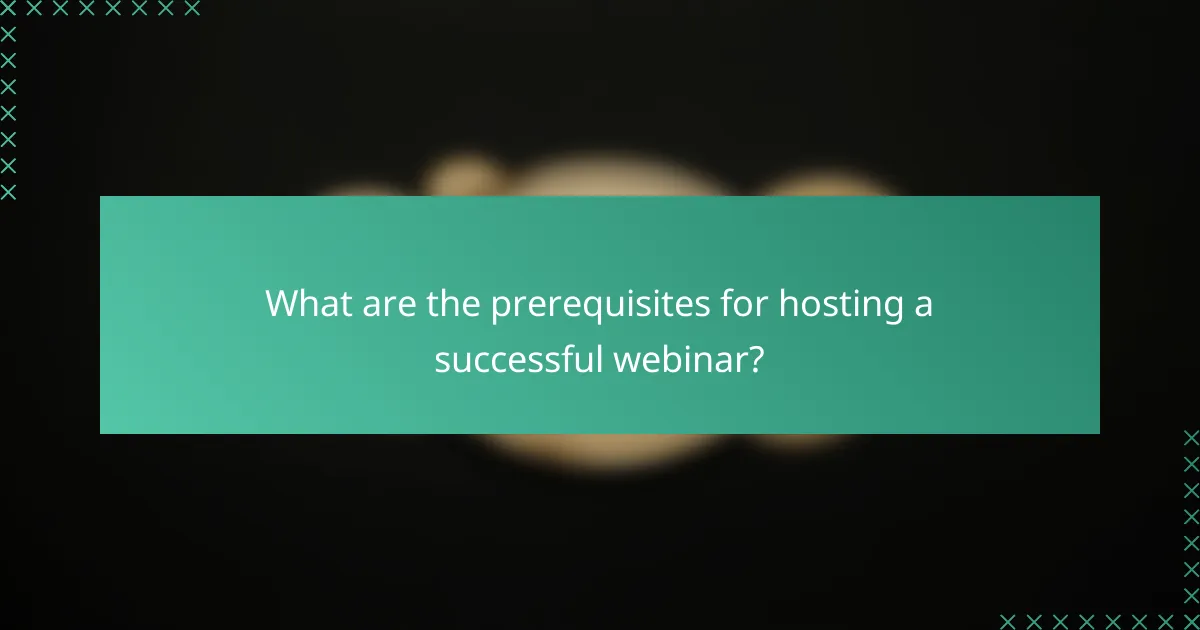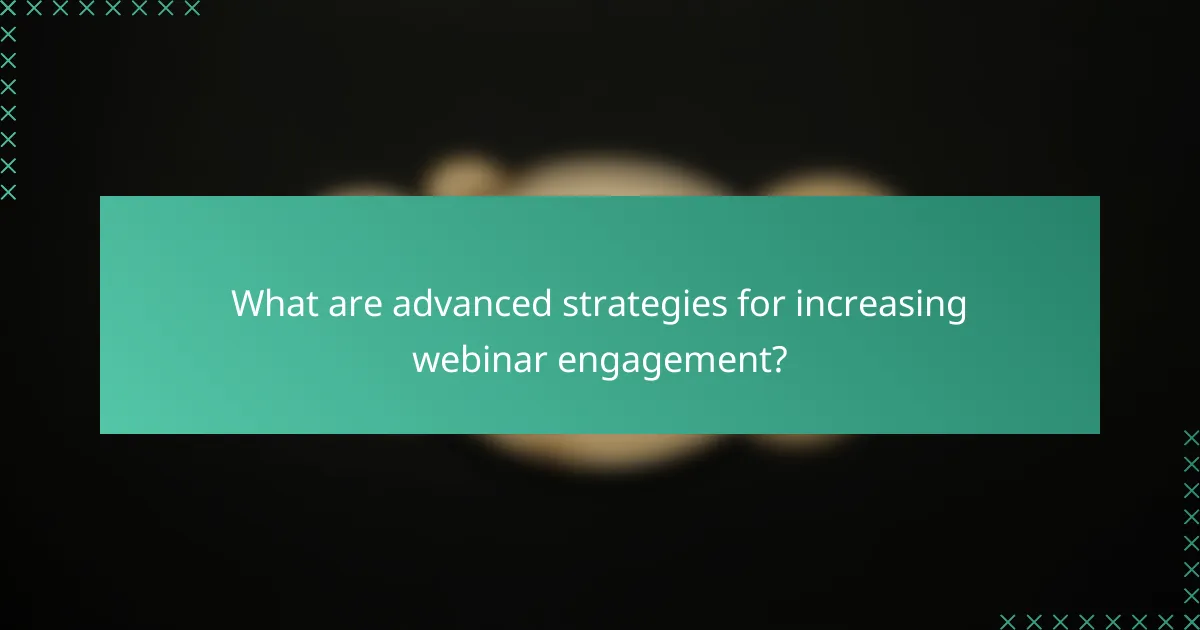Hosting a successful webinar requires a combination of a well-crafted script, reliable technical setup, and effective promotional strategies. A clear and engaging script keeps your audience focused, while quality audio and video equipment ensures a smooth experience. To attract attendees, leverage social media, email marketing, and dedicated landing pages for maximum visibility and engagement.

How to write an effective webinar script?
Writing an effective webinar script involves creating a clear, engaging narrative that guides your audience through the content while achieving specific objectives. A well-structured script not only keeps the presentation focused but also enhances audience retention and participation.
Structure your content with clear objectives
Begin by defining the primary goals of your webinar. Are you aiming to educate, promote a product, or generate leads? Establishing clear objectives helps shape the content and ensures that every section of the script serves a purpose.
Organize your script into distinct sections, such as an introduction, main content, and conclusion. Each section should align with your objectives, allowing for a logical flow that guides the audience through the material. Aim for a structure that includes key points, supporting details, and transitions to maintain coherence.
Engage your audience with storytelling
Incorporating storytelling into your webinar script can significantly enhance audience engagement. Use relatable anecdotes or case studies that illustrate your key points, making the content more memorable and impactful.
Consider the emotional journey of your audience. Craft narratives that resonate with their experiences, challenges, or aspirations. This connection can foster a deeper understanding of the material and encourage active participation throughout the webinar.
Include calls to action
Effective webinars guide participants toward specific actions. Integrate clear calls to action (CTAs) throughout your script, prompting the audience to engage further with your content or services. For instance, you might encourage viewers to sign up for a newsletter, download a resource, or schedule a consultation.
Position your CTAs strategically, such as at the end of key sections or after presenting compelling information. Ensure they are concise and actionable, making it easy for the audience to follow through. Avoid overwhelming them with too many CTAs; focus on a few key actions that align with your objectives.

What technical setup is required for webinars in Australia?
To successfully host webinars in Australia, you need reliable software, quality audio and video equipment, and a stable internet connection. These elements ensure a smooth experience for both presenters and attendees.
Choose reliable webinar software like Zoom or GoToWebinar
Selecting dependable webinar software is crucial for effective presentations. Platforms like Zoom and GoToWebinar are popular choices in Australia due to their user-friendly interfaces and robust features. They offer tools for screen sharing, audience interaction, and analytics to track engagement.
Consider your audience size and specific needs when choosing software. For larger webinars, GoToWebinar may be preferable, while Zoom is often favored for smaller, interactive sessions. Always check for local support options as well.
Ensure high-quality audio and video equipment
Investing in good audio and video equipment significantly enhances the webinar experience. A quality microphone can reduce background noise and improve clarity, while a high-definition camera ensures that your visuals are sharp and professional. Consider using external devices rather than built-in options for better performance.
Additionally, lighting plays a key role in video quality. Natural light is ideal, but if that’s not possible, use soft, diffused lighting to avoid harsh shadows. Test your setup before the event to ensure everything functions correctly.
Test your internet connection and bandwidth
A stable internet connection is essential for smooth webinar delivery. Aim for a minimum upload speed of 3 Mbps for standard quality, but higher speeds are recommended for HD video. Use a wired connection if possible, as it tends to be more reliable than Wi-Fi.
Before your webinar, conduct a speed test and check for any potential issues like network congestion. It’s wise to have a backup plan, such as a mobile hotspot, in case of unexpected connectivity problems during the event.

How to promote webinars effectively?
Promoting webinars effectively involves using strategic channels to reach your target audience and generate interest. Focus on social media, email marketing, and dedicated landing pages to maximize visibility and engagement.
Utilize social media platforms like Facebook and LinkedIn
Social media platforms such as Facebook and LinkedIn are powerful tools for promoting webinars. Create event pages and share engaging posts that highlight the benefits of attending your webinar. Use targeted ads to reach specific demographics, ensuring your message gets in front of the right audience.
Consider using live video teasers or countdowns to create excitement. Engaging with followers through comments and messages can also foster a sense of community and encourage registrations.
Leverage email marketing campaigns
Email marketing remains one of the most effective ways to promote webinars. Build a segmented email list to tailor your messages based on interests and past interactions. Send out a series of emails leading up to the event, including save-the-date notices, reminders, and last-minute registration prompts.
Incorporate clear calls to action and links to the registration page in each email. Personalizing your emails can significantly increase open and click-through rates, making your campaign more successful.
Create engaging landing pages
An engaging landing page is crucial for converting interest into registrations. Ensure your landing page clearly outlines the webinar’s value proposition, including key topics, speakers, and what attendees will gain. Use compelling visuals and testimonials to enhance credibility and appeal.
Incorporate a simple registration form that minimizes friction. Consider adding a countdown timer to create urgency and encourage immediate sign-ups. A/B testing different elements on your landing page can help optimize conversion rates over time.

What are the prerequisites for hosting a successful webinar?
To host a successful webinar, you need to establish a clear understanding of your audience, set specific goals, and ensure the technical setup is reliable. These prerequisites help in delivering engaging content that meets participants’ expectations and achieves your objectives.
Define your target audience
Identifying your target audience is crucial for tailoring your webinar content and marketing strategies. Consider demographics such as age, profession, and interests to create a profile of your ideal attendees.
Once you have a clear audience profile, use this information to shape your messaging and promotional efforts. For example, if your audience consists of small business owners, focus on practical strategies that address their unique challenges.
Set clear goals and objectives
Establishing clear goals and objectives for your webinar is essential for measuring success. Determine what you want to achieve, whether it’s generating leads, educating participants, or building brand awareness.
Break down your goals into specific, measurable objectives. For instance, aim for a certain number of registrations or a target engagement rate during the session. This clarity will guide your content creation and promotional tactics.

What criteria should be used to select webinar topics?
Choosing the right webinar topics involves understanding your audience’s needs and aligning them with current industry trends. Effective topics should address specific challenges while also tapping into popular demands within your field.
Identify audience pain points
Start by gathering feedback from your target audience to pinpoint their most pressing issues. Surveys, social media polls, and direct conversations can reveal common challenges that your audience faces. Focus on topics that provide solutions or insights into these pain points.
For example, if your audience consists of small business owners struggling with digital marketing, a webinar on “Effective Social Media Strategies for Small Businesses” could be highly relevant. This approach ensures that your content resonates and engages effectively.
Analyze industry trends and demands
Stay informed about the latest developments in your industry by following relevant publications, attending conferences, and participating in online forums. Identifying trends can help you select topics that are timely and appealing to your audience. Look for emerging technologies, regulatory changes, or shifts in consumer behavior.
For instance, if remote work tools are gaining traction, a webinar on “Best Practices for Managing Remote Teams” could attract significant interest. Aligning your topics with industry demands not only enhances relevance but also positions you as a thought leader in your field.

What are advanced strategies for increasing webinar engagement?
Advanced strategies for increasing webinar engagement focus on creating an interactive and immersive experience for participants. By incorporating various techniques, you can enhance viewer participation and retention, making your webinars more effective.
Incorporate interactive elements like polls and Q&A
Integrating interactive elements such as polls and Q&A sessions can significantly boost engagement during webinars. These tools allow participants to actively contribute, making them feel more involved and valued.
When planning your webinar, consider scheduling multiple polls throughout the session to gather real-time feedback or opinions. Aim for at least two to three polls in a typical hour-long webinar. Additionally, allocate time for Q&A, encouraging attendees to ask questions and share insights.
To maximize effectiveness, ensure that polls are relevant to the content and that you address questions thoughtfully. This not only keeps the audience engaged but also fosters a sense of community among participants. Avoid overwhelming attendees with too many questions at once; instead, space them out to maintain focus.
